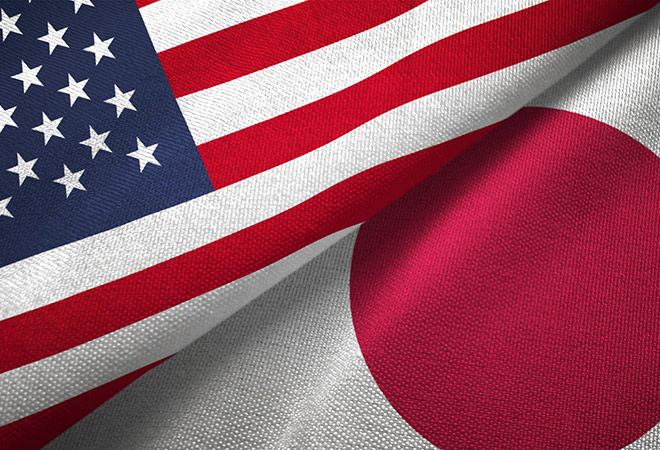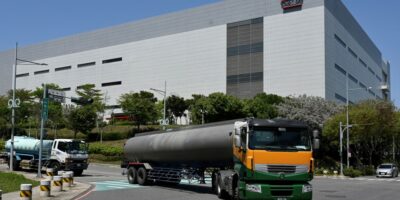
Did Japan just pick the US over China in the tech war?Source: Getty/AFP
Chip 4 Alliance: Japan pours money into Kioxia, Western Digital to cement pact with the US, spur chip production
- Japan is providing a subsidy of up to US$680 million for a joint venture semiconductor production facility by Kioxia Corp and US-based Western Digital Corp.
- The move will not only secure stable domestic chip production but also to strengthen Japan-US cooperation.
Tomorrow, the United States (US) and Japan will be holding their first economic “two-plus-two” dialogue involving their foreign and industry ministers in Washington. The launch of the “two-plus-two” framework was agreed upon by the US President Joe Biden and Prime Minister Fumio Kishida when they held a virtual meeting in January. The focus is to enhance economic security, by developing resilient supply chains for key items like semiconductors — all of which are amid China’s growing economic clout.
Few days shy of the dialogue, the country announced that it will be subsidizing a semiconductor production facility up to US$680 million as part of efforts to secure stable domestic chip production. The production facility is by Japan’s Kioxia Corp. and US chip giant Western Digital Corp. According to the country’s Economy, Trade and Industry Minister Koichi Hagiuda, the government had approved the capital investment plan to enhance the capacity of the facility.
Chip production is however not the sole reason for the subsidy, according to Hagiuda. “The plan will contribute to developing a resilient chip supply chain, making progress in the semiconductor industry as well as strengthening cooperation between Japan and the US,” he said, referring to the facility in Yokkaichi, Mie Prefecture.
Both companies said they will continue to accelerate the development and production of cutting-edge flash memory at the Yokkaichi plant with the subsidies, while contributing to fostering chip-related industries and talent. For context, the joint venture manufacturing facility will produce 3D flash memory including 112- and 162-layer as well as future nodes, with the initial production output eyed this fall.
Kioxia’s president Nobuo Hayasaka said, “We appreciate the support of the Japanese government and will continue to produce cutting-edge flash memory which is indispensable for a digital society where cloud services, 5G communications, IoT, AI and automated driving are expanding.”
Japan, alongside the US, has been threatened by China’s economic clout in the region. In fact, Japan and other Asian nations have urged the US to take a more active economic role in the Indo-Pacific after the administration of Biden’s predecessor, Donald Trump, pulled the Us out of the Trans-Pacific Partnership trade agreement.
The economy-focused two-plus-two framework between Japan and the US is expected to cover supply chains, technology investments and standard-setting, according to senior US officials. Infrastructure investment, economic security, green energy, trade and other issues were also expected to be discussed, Kyodo News quoted Japanese government sources as saying.
Like the US, Japan too once dominated semiconductor production. Today, however, about half of global chip manufacturing is done by Taiwanese and South Korean companies, with the majority of production taking place in China. The US share of manufacturing capacity has fallen from 37% in 1990 to 12% today. Japan however still plays an outsize role in production networks by making the machines, parts and chemicals needed to make the chips themselves.
Still, the Japanese government wants to entice leading chipmakers to set up operations in the country. That said, US companies have been a priority target, as cooperation between the two countries’ businesses will facilitate the creation of secure supply chains, an item that dominates the agenda whenever officials from the two countries meet.
On top of that, since the US has been working to be more independent of China’s products, it has been forming closer cooperation with Taiwan, Japan and South Korea.Known as the new “Chip 4” alliance, the partnership between the four nations aims to improve the semiconductor supply chain. Without much surprise, Japan and Taiwan have almost immediately indicated approval while South Korea is still undecided.
READ MORE
- Strategies for Democratizing GenAI
- The criticality of endpoint management in cybersecurity and operations
- Ethical AI: The renewed importance of safeguarding data and customer privacy in Generative AI applications
- How Japan balances AI-driven opportunities with cybersecurity needs
- Deploying SASE: Benchmarking your approach


